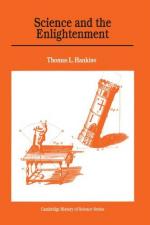
|
| Name: _________________________ | Period: ___________________ |
This test consists of 15 multiple choice questions and 5 short answer questions.
Multiple Choice Questions
1. Of all the prize papers, Rousseau's ________, written for the prize offered by the Dijon Academy in 1750, has had the most lasting fame, according to the narrator in Chapter 6.
(a) Examination of a Theory of Electricity and Magnetism.
(b) Dissertation on Ice.
(c) Vegetable Staticks.
(d) Discourse on the Sciences and the Arts.
2. The science of man took several very different directions during the Enlightenment, the most controversial being that of ________.
(a) Lavoisier.
(b) Rousseau.
(c) Robespierre.
(d) Condorcet.
3. According to the narrator in Chapter 6, what where the two great national academies that were the models on which the new academies of the eighteenth century were founded?
(a) International School of Georgia / German School of Athens.
(b) International Bilingual School of Provence / Black Forest Academy.
(c) International School of Luxembourg / Crossroads Christian Academy.
(d) Royal Society of London / Paris Academy of Science.
4. The first mortality tables from which life insurance premiums could be calculated were constructed just at the end of the ________ century.
(a) 20th.
(b) 19th.
(c) 17th.
(d) 18th.
5. Joseph Pitton de Tournefort, Antoine de Jussieu, and Carl Linnaeus were considered ________, according to the narrator in Chapter 5.
(a) Cardiologists.
(b) Zoologists.
(c) Naturalists.
(d) Podiatrists.
6. Saussure found that plants grow better in an atmosphere rich in fixed air, up to a concentration of approximately ________ percent.
(a) 75.
(b) 30.
(c) 90.
(d) 8.
7. According to the narrator at the beginning of Chapter 5, this chapter is about the world of living things and could be called ________, except as a word and as a discipline, it did not appear until the very end of the eighteenth century.
(a) Zoology.
(b) Oceanography.
(c) Biology.
(d) Geneology.
8. The period that we call the Enlightenment ended with whom according to the narrator in Chapter 6?
(a) Lafayette.
(b) Condorcet.
(c) D'Alembert.
(d) Rousseau.
9. As a mathematician and rigorous metaphysician, ________ believed that the universe in all past, present, and future states followed a "preestablished harmony" laid down by God at the time of creation.
(a) Bourguet.
(b) Haller.
(c) Leibniz.
(d) Buffon.
10. The Berlin Academy of Sciences was founded in 1700 but achieved little until it was reorganized in 1743 on the Parisian model by ________.
(a) Vladimir Lenin.
(b) Frederick the Great.
(c) Cassius Clay.
(d) Walt Whitman.
11. The reintroduction of atomism into chemistry was accomplished by a meteorologist, ________, who became a chemist only when he saw the implications for chemistry of his ideas about the atmosphere.
(a) Berthollet.
(b) Black.
(c) John Dalton.
(d) Lavoisier.
12. Acknowledging the existence of the gaseous states was a prerequisite for explaining combustion, the central problem of the ________, according to the narrator in chapter 4.
(a) Scientific Revolution.
(b) French Revolution.
(c) Chemical Revolution.
(d) Industrial Revolution.
13. In February 1744, ________, master apothecary to the French Army, published an article on the red precipitate of mercury "per se" in "Observations sur la physique, sur l'histoire naturelle, et sur les arts."
(a) Turgot.
(b) Bayen.
(c) Macquer.
(d) Lavoisier.
14. D'Alembert, in 1754, through the machinations of his powerful patroness, the ________, became part of the literary French Academy.
(a) Rousseau.
(b) Deffand.
(c) Black.
(d) Condorcet.
15. Who was the first person to identify a new air different from common atmospheric air,, in Chapter 4?
(a) Cullen.
(b) Lavoisier.
(c) Black.
(d) Newton.
Short Answer Questions
1. According to the narrator in Chapter 6, the ________ philosophers found their principles in a special human sentiment or intuitive sociability.
2. Robert Whytt and Charles Aston studied the properties of ________ and ________ according, to the narrator in Chapter 4.
3. In 1757, thirty years after Hales described his experiments with ________, Joseph Black discovered the phenomenon of ________.
4. ________ theory entered into law not only in the making of contracts but also in the determination of guilt and innocence.
5. In Chapter 4, Abbe Condillac claimed that ________ was the best language because it had the best symbols.
|
This section contains 594 words (approx. 2 pages at 300 words per page) |

|




